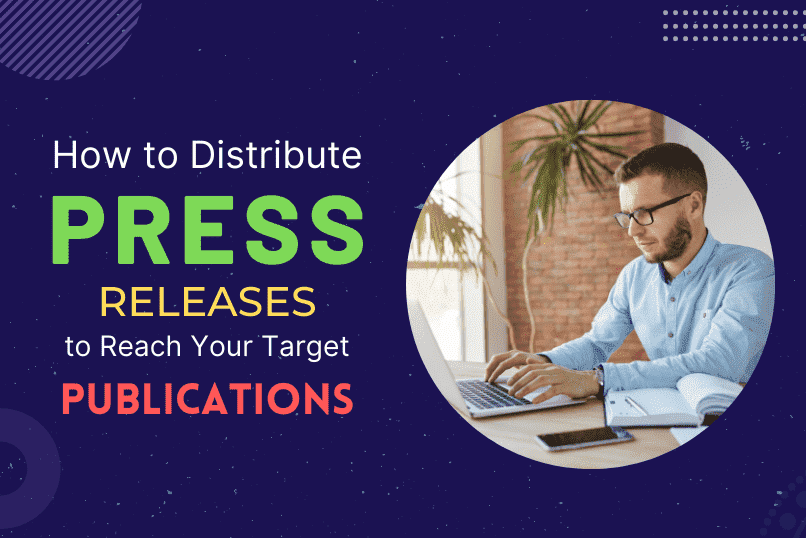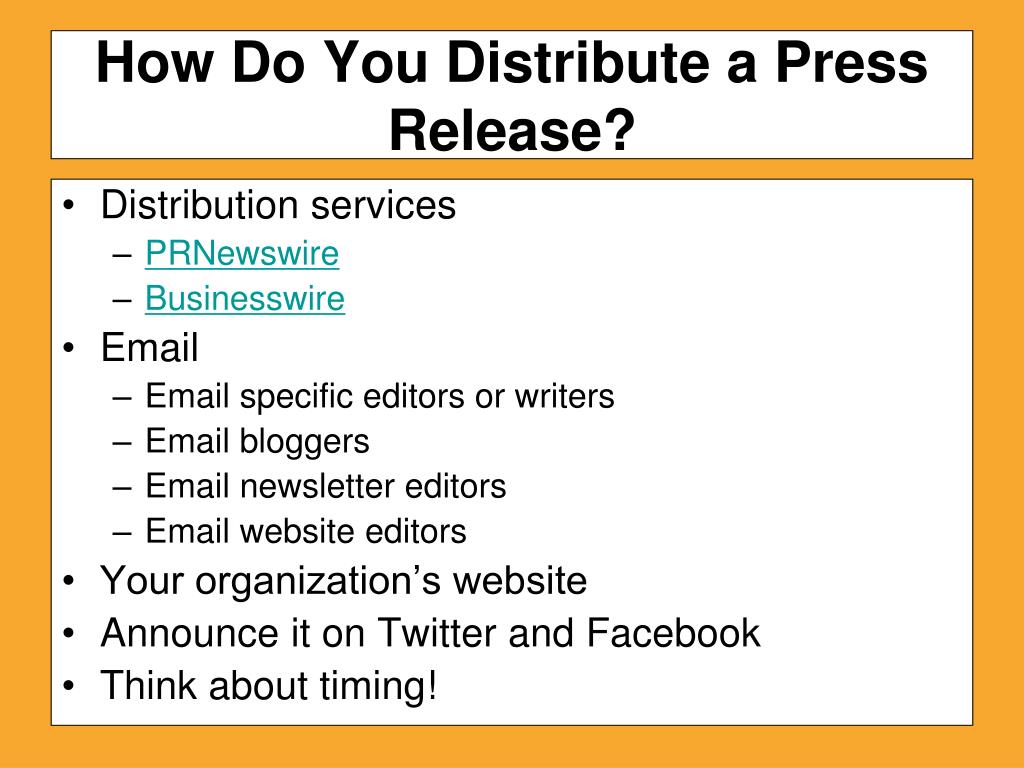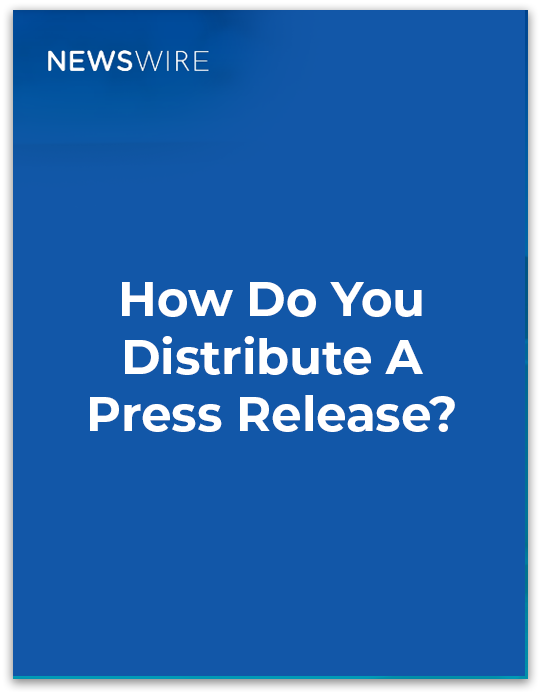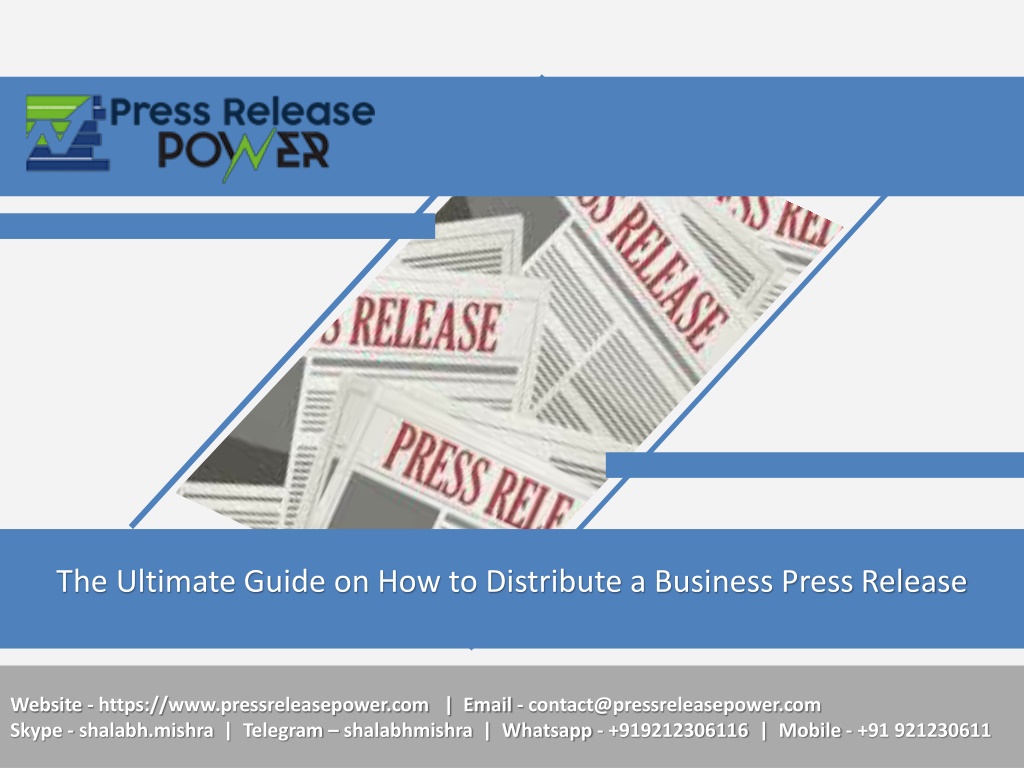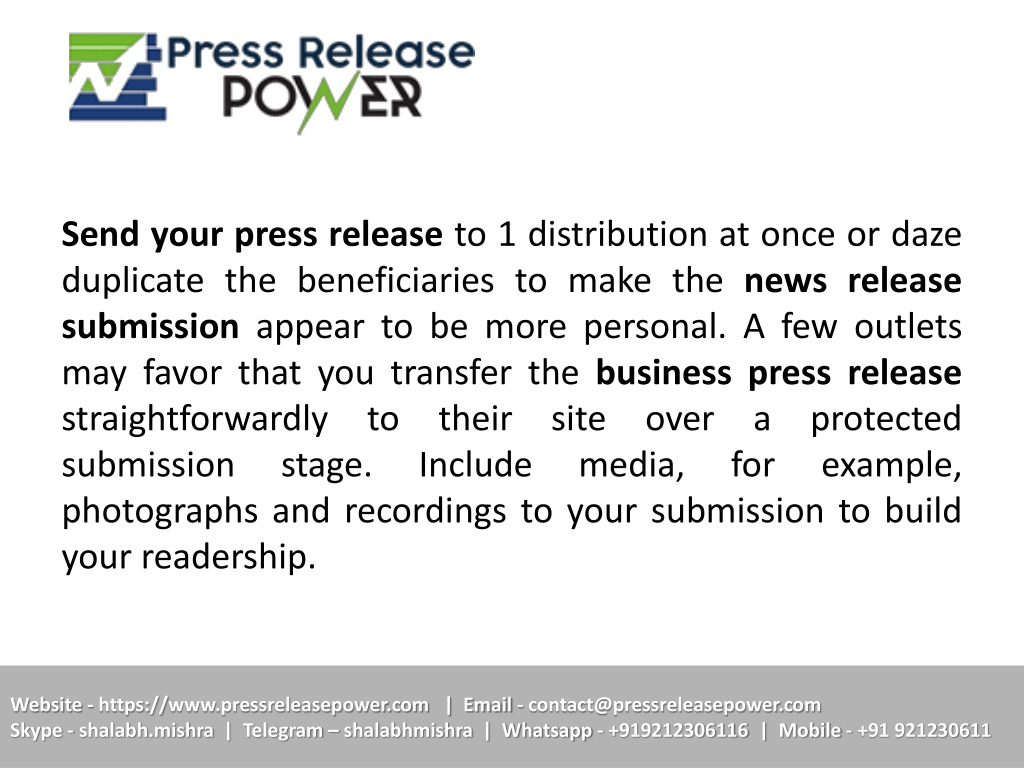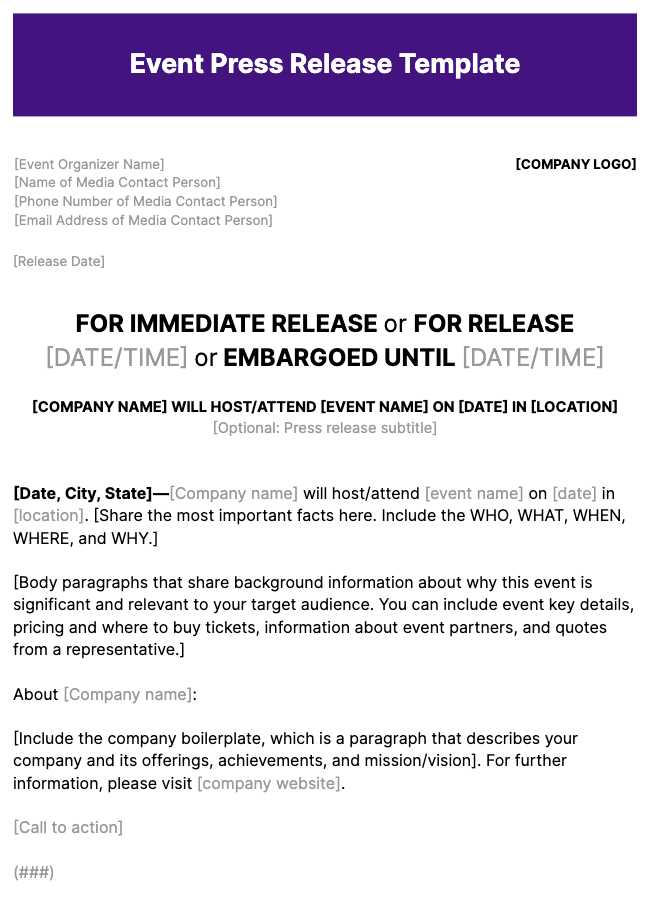How To Distribute A Press Release

Your press release is written, polished, and ready to go. Now what? Getting it seen by the right journalists and outlets is critical for maximizing impact. This guide provides a streamlined approach to press release distribution, ensuring your news reaches its intended audience quickly and effectively.
Effective press release distribution goes beyond simply sending an email blast. It requires strategic planning, targeted outreach, and understanding the ever-evolving media landscape. Failure to properly distribute can result in your news being overlooked, wasting valuable time and resources.
Step 1: Building Your Media List
Start by identifying key journalists, bloggers, and media outlets that cover your industry or niche. This is the foundation of your distribution strategy.
Use media databases like Cision, Meltwater, or Prowly to find relevant contacts. These services offer comprehensive information on journalists, including their beat, contact information, and recent articles.
Segment your list based on factors such as outlet size, geographic location, and specific areas of interest. This allows for more personalized and targeted messaging.
Step 2: Choosing a Distribution Method
Select the distribution method that best suits your budget and reach goals. There are several options available, each with its own advantages and disadvantages.
Press release distribution services like PR Newswire, Business Wire, and GlobeNewswire offer wide distribution to media outlets and online news platforms. They often include features like multimedia embedding and detailed analytics.
Emailing journalists directly allows for a more personalized approach. However, it requires more time and effort to manage and track responses.
Social media can be used to amplify your press release and reach a wider audience. Share snippets of your news with relevant hashtags and engage with followers.
Step 3: Crafting a Compelling Pitch
A well-crafted pitch is essential for grabbing a journalist's attention. It should be concise, relevant, and highlight the key takeaways of your press release.
Personalize your pitch by referencing the journalist's previous work or mentioning why your news is relevant to their audience. Avoid generic templates.
Keep your subject line short and attention-grabbing. Include keywords that will resonate with journalists, such as "Exclusive," "Breaking News," or "[Industry] Innovation."
Step 4: Optimizing Your Press Release
Before distribution, ensure your press release is optimized for search engines and readability. This will increase its visibility and impact.
Include relevant keywords throughout your press release, particularly in the headline, subheadings, and first paragraph. Use tools like Google Keyword Planner to identify high-volume keywords.
Use a clear and concise writing style, avoiding jargon and technical terms. Break up long paragraphs into shorter, more digestible chunks.
Include high-quality images and videos to enhance your press release. Visual content can significantly increase engagement and media coverage.
Step 5: Timing and Follow-Up
The timing of your press release distribution can significantly impact its success. Consider factors such as industry events, news cycles, and journalist deadlines.
Avoid distributing your press release on weekends or holidays, when journalists are less likely to be working. Mid-week mornings are generally considered the best time to send press releases.
Follow up with journalists who you think would be interested in your story. A brief email or phone call can help you gauge their interest and answer any questions they may have.
Step 6: Monitoring and Measurement
Track the performance of your press release to understand its impact and identify areas for improvement. Use analytics tools to monitor key metrics such as reach, engagement, and media coverage.
Monitor media mentions and social media conversations related to your press release. This will help you understand how your news is being received and identify potential opportunities for further engagement.
Use the data you collect to refine your future press release distribution strategies. Experiment with different approaches to optimize your results.
Key Takeaways:
Targeted Distribution: Focus on reaching the right journalists and outlets, not just as many as possible.
Compelling Content: Ensure your press release is well-written, newsworthy, and relevant to your target audience.
Consistent Follow-Up: Don't be afraid to follow up with journalists to gauge their interest and answer any questions.
The press release distribution landscape is constantly evolving. Stay informed about the latest trends and best practices to ensure your news reaches its intended audience and achieves its desired impact. Continuously refine your strategy based on data and feedback to optimize your results over time. Successful press release distribution requires a proactive and adaptable approach.





